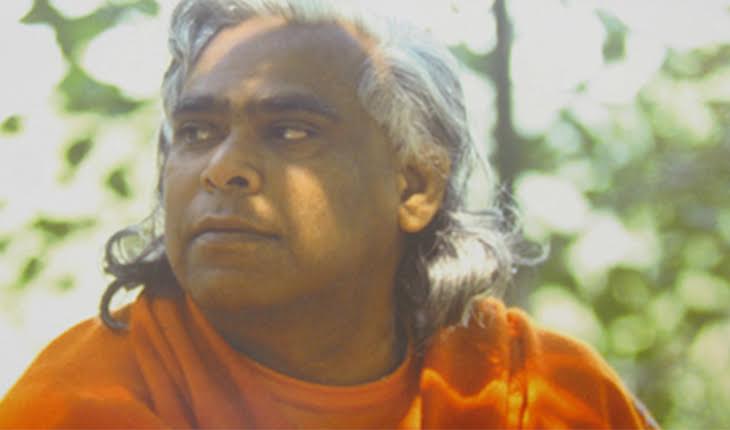Sivananda Bahamas Blog
Expand Your Horizons …
Our Blog
Diving into Swami Vishnudevananda’s Five Points of Yoga
In these days of mindfulness, positive psychology and the science of happiness, the yogic lifestyle is the ideal approach to health and well-being. Why? Because much of what we may think of as new has actually been taught in the yoga tradition for millennia.
At the ashram, a series of core courses bring ancient practices into the modern world, designed by founder Swami Vishnudevananda as a way to reconnect us with our true selves.
"When Swami Vishnu [sic] came to the West, he was a master in hatha yoga and well versed in all the traditions," says Pranava, an advanced Sivananda Yoga teacher who teaches many of the core courses. Seeing how stressed out and disconnected people were, Swami Vishnudevananda "condensed all the teachings he received from his master Swami Sivananda into the Five Points of Yoga, on which these courses are based."
The Five Points of Yoga — proper exercise, proper breathing, proper relaxation, proper diet, and positive thinking — are hugely beneficial, says Swami Sitaramananda, Director of the Sivananda Ashram Yoga Farm in Grass Valley, California. "In the asanas — proper exercise — the organs are being touched, the energy systems help concentrate mind, elevate prana. That helps you get in touch with your own spirit," she said recently, speaking at the Bahamas ashram.
Deep, abdominal alternative-nostril breathing helps to balance two hemispheres of the brain, she says, while relaxation allows for the release of tensions, keeping the mind calm and energized and helping us get in touch with ourselves. We also calm ourselves through meditation, she says, while vegetarian cuisine means we get more energy from food. "Junk food takes energy to digest, too much sugar makes emotions volatile."
The Five Points are all discussed in the Essentials of Yoga courses, of which there are several levels. For someone new to yoga, Essentials I covers the basic Five Points of Yoga through discussions of their philosophy, including positive thinking and meditation, and asana classes that cover the 12 basic postures in the Sivananda Yoga sequence.
"This course explains the main practices in the ashram," Pranava says, keeping in mind the words of Swami Sivananda that one ounce of practice is better than tons of theory." The Essentials I course also helps students take the teaching of the ashram home, helping to ground them and give them the tools for integrating the yogic lifestyle.
In Essentials II and III, specific topics in the Five Points teachings and the asana practice are examined at a deeper level. "Let's say we talk more in depth about concentration, so we take concentration into the asana practice," Pranava says. "If it was meditation, we would practice focusing on the meditative aspect."
Another core Sivananda course, The Power of Positive Thinking, helps us understand why positive thinking is so important. "If our mind is filled with negative thoughts, we can't sit down and meditate," Pranava says. "This course helps shift our mind to the positive." He calls this practice "mind culture," and offers a description used by Abraham Lincoln, who once commented that we can either rejoice that thorn bushes have roses or complain that rose bushes have thorns.
"It's designed to help us concentrate which is hard to do if our mind is bombarded with negative thoughts," he says. "It also helps us to be content with life circumstances, to understand our thoughts, where they're coming from and how to deal with them, using the practice of autosuggestion, developed by Emile Coue. Students learn how to apply particular autosuggestion at certain times — when we fall asleep and we wake up in the morning."
Working with the subconscious mind can help uproot negative behavior and thoughts and replace them with positive ones, Pranava says. "This allows us to manifest healing in our life, to manifest positive shifts in our lifestyle. The course also introduces proven yogic and non yogic techniques to improve our ability to meet the challenges of contemporary life."
Luise Rubines arrived at the ashram a few weeks ago for a yoga vacation and decided to take the Power of Positive Thinking course. "For the last year, I have had a really bad time," she says. "I used to live in London, where I was doing yoga and meditation. It had changed my life, I found such balance."
Then she moved back home to Spain, where she borrowed from the bank to set up a tourist business. The stress was huge, Luise says, and then her father died a year ago at age 90. Her mother's behavior was so demanding and Luise felt she was changing, not doing yoga, feeling sad.
"I like to be surrounded by positive thinking," she says. "I have been to India. I feel like a very spiritual person and where I'm from, in Galicia, is full of spirituality. But I have a problem going back to take care of my mother. I feel I have to set barriers, and then feel horrible when I get angry."
She learned from the Power of Positive Thinking course that the moment when she thinks negative thoughts to try to send the opposite messages to her subconscious. "It also taught us to breathe through our negative thoughts," she says. "I will practice and be positive."
Pranava, who also teaches Introduction to Meditation, points out that this practice cannot be taught, and certainly not in a short space of time. This core course offers ways in which students can learn techniques for concentration, a method for helping them deepen their practice over time.
That was the case for Karma Yogi Meeshka Kempisty-Pullin, who has been meditating for 15 years so she could benefit from its calming effects. "It helps you see the things you might not see in a scattered head," she says.
She is grateful for the pointers provided in the Meditation course, a practicum in sitting postures, deep relaxation, breathing exercises, all to aid in concentration. "Pranava used the idea of thinking about a fruit, just that one thought in which your mind focuses on the fruit. The point is, if I can do that with an apple, then later it could be the divine."
Core courses are offered in three-day and, for deeper study, five-day modules to a variety of students, from yoga vacationers to Karma Yogis, who take one core course monthly, as part of the ashram's Residential Study program. "It gives an introduction to someone who is new and also someone who is established and practicing these techniques," Pranava says. "People choose to come for these courses, or they come for vacation and get inspired and want to learn more."
*****
Gain invaluable tools and skills for creating vitality, happiness, and health: Sivananda Core Courses








